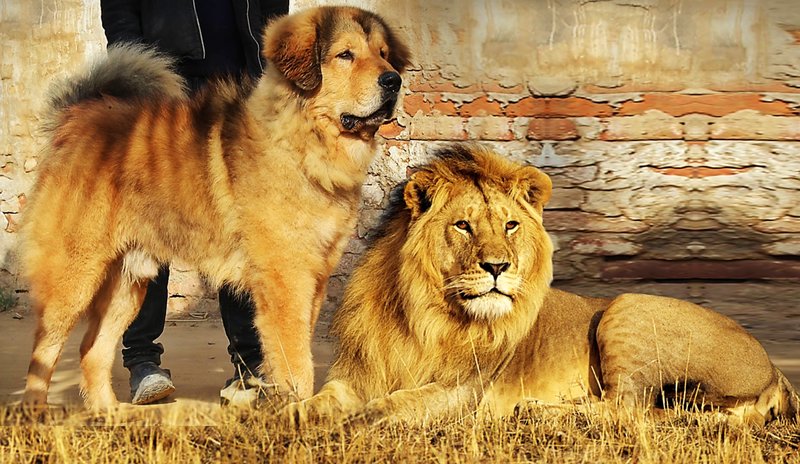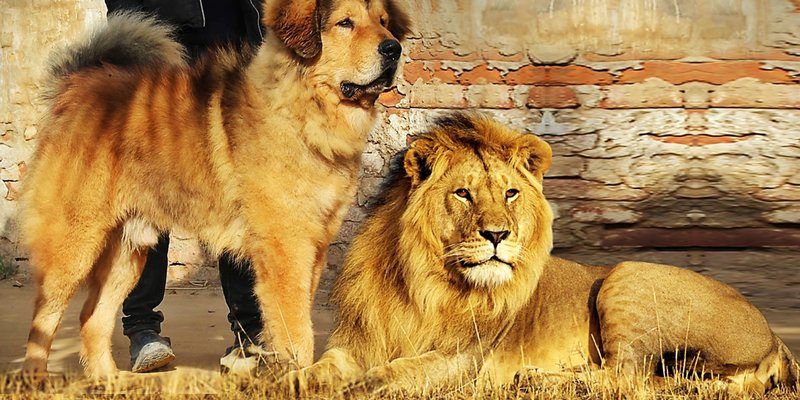
So, if you’re curious about the big cat family and its relatives, grab a comfy seat and a cup of coffee. You might find it surprising how many animals can remind you of the king of the beasts. From tigers to leopards, each has its unique flair. Let’s explore these animals together and shed light on how to differentiate them from our furry friend, the lion.
The Majestic Tiger
When thinking about animals similar to lions, the tiger is often the first one that pops up. These magnificent cats share a similar size and powerful build, making them both apex predators. But here’s the twist—tigers are solitary hunters, unlike social lions that live in prides. Imagine a lion basking in the sun with its buddies versus a tiger stealthily navigating through dense forests all on its own.
Tigers boast a distinctive orange coat marked with black stripes, which helps them blend into their forest habitats. Unlike the tawny color of a lion’s fur, a tiger’s stripes are like nature’s unique fingerprint. If you ever find yourself debating whether a big cat is a lion or a tiger, just look for those stripes—they’re a surefire sign you’re looking at a tiger!
Another fun fact? Tigers are generally larger and heavier than lions. While male lions can weigh around 420 pounds, some male tigers can tip the scales at over 600 pounds! So, if you’re up against a hefty feline, always check for those stripes first.
The Powerful Leopard
Next up is the leopard, a smaller cousin of the lion and part of the big cat family. These sleek predators sport a beautiful coat filled with rosettes, similar in pattern to a lion’s more uniform color. Both animals are skilled hunters, but leopards have a knack for climbing trees and often stash their meals in the branches to hide from scavengers. Think of it this way: while lions lounge in the open savanna, leopards work more like ninjas, utilizing their agility to navigate their environment.
Leopards can be found in various habitats, from grasslands to forests, and their adaptability is a strong suit. In comparison, lions are more inclined to stick to larger territories where they can roam without too much competition. If you’re trying to identify a leopard in the wild, keep an eye out for its smaller size and distinctive rosette spots.
One more thing: leopards are often solitary, unlike the social nature of lions. So, if you see a big cat on its lonesome, there’s a good chance it’s a leopard!
The Cunning Cheetah
Next, let’s talk about the cheetah. Known for being the fastest land animal, the cheetah has a leaner body designed for speed. Their spotted coat resembles that of a leopard, but here’s the catch: cheetahs have solid black spots rather than rosettes, giving them a distinct look. While lions chase their prey using brute strength and teamwork, cheetahs rely on their incredible speed, often sprinting up to 75 miles per hour in short bursts. Imagine a lion slowly stalking its dinner while a cheetah zips in for a lightning-fast capture!
A big difference between lions and cheetahs is their social structure. Cheetahs tend to be more solitary, although females may occasionally be seen with their cubs. In contrast, lions are all about family life, living in groups known as prides. So, if you’re ever watching a chase scene in nature and see a speedy cat zoom past, remember: it’s likely a cheetah.
The Striking Jaguar
Moving on, let’s meet the jaguar. These incredible cats are the largest in the Americas and share some physical similarities with lions. Like leopards, jaguars have rosettes on their fur, but their rosettes are larger and more spaced apart. One noticeable feature of jaguars is their powerful bite, which allows them to crush the shells of turtles and other hard-shelled prey.
While lions are primarily found in Africa, jaguars roam the rainforests and wetlands of South America. They have a more muscular build compared to lions, which supports their swimming skills. If you ever see a big cat lounging by the water, you might be looking at a jaguar instead of a lion!
Another aspect to consider is their behavior. Jaguars prefer solitude over the social life of lions. They hunt alone, often ambushing their prey with stealth before delivering a swift and powerful kill.
The Agile Snow Leopard
Now let’s venture into the mountainous habitats of the snow leopard. These elusive cats are beautifully adapted to their cold environments with thick fur and long tails that help them balance on steep terrains. Snow leopards are smaller than lions and sport grayish fur with black rosettes, making them blend perfectly in rocky landscapes. Picture a lion lounging in the grass, and then envision a snow leopard gracefully navigating rocky cliffs. It’s a whole different scene!
Snow leopards focus more on stealth compared to the roar of a lion’s pride. They rely on their keen eyesight and powerful legs to leap from rock to rock while hunting, showing just how versatile these cats are. They primarily hunt alone, so if you come across a big cat in the mountains, it’s more likely to be a snow leopard than a lion.
One thing to note: snow leopards are incredibly rare and elusive, making spotting one a thrilling experience for wildlife enthusiasts.
The Fearsome Cougar
Let’s not forget the cougar, also known as the mountain lion or puma. These big cats may not have the impressive mane like lions, but they still share a similar body shape and athletic build. Cougars have a tawny coat, much like lions, which provides excellent camouflage in their natural habitats of forests, mountains, and deserts in North America.
Interestingly, cougars are incredibly adaptable. They can thrive in various environments, from the snowy Rockies to the dry deserts of the Southwest. While lions are largely social, cougars are solitary predators, often hunting alone. If you spot a large cat with a clean, sleek coat in North America, the chances are you’re looking at a cougar rather than a lion.
Cougars also make distinctive sounds, ranging from growls to screams, which can be quite eerie at night. So, if you hear a mysterious call in the wilderness, pay attention—it might be a cougar letting everyone know it’s around!
The Wild and Beautiful Caracal
Next on our list is the caracal, a smaller wild cat that has some lion-like features, particularly those striking tufted ears. Caracals are agile hunters, like a lion in miniature, and are known for their excellent jumping abilities. While they’re not as big as lions, they can leap impressive heights to catch birds mid-flight. Imagine a small cat channeling its inner lion—it’s both cute and fierce!
Caracals have a reddish-brown coat that helps them camouflage in their surroundings. Unlike lions, they don’t form prides and usually hunt alone, making them stand out in the feline family tree. Their size is roughly that of a medium dog, so if you see a cat-like creature with those distinct ear tufts on its head, it’s a caracal, not a lion!
These cats have a mysterious aura about them and are often found in scrublands or savannas, showing just how varied the feline world can be.
The Enigmatic Serval
Last but not least, let’s talk about the serval. This medium-sized wild cat has long legs, large ears, and a spotted coat that can remind you of a lion, albeit in a much smaller package. Servals are incredible hunters, known for their ability to leap high in the air to catch birds and rodents. Their built-in camo from their golden, spotted fur helps them blend seamlessly into the grasslands of Africa.
While lions hunt in packs, servals do their thing solo. They’re more active at dusk and dawn, giving them a unique hunting style that sets them apart from the more social lions. Spotting a serval in the wild can be a delightful surprise, especially with their incredible agility.
Servals are fascinating cats that make the feline family even more interesting. If you come across a small, tall cat in the grasslands, it just might be a serval rather than a lion!
So there you have it—ten animals that share similarities with the lion but are unique in their own right. From the powerful tiger to the agile serval, each big cat adds a different flavor to the wild world we share. Understanding these differences not only deepens our appreciation for these incredible creatures but also highlights how diverse the animal kingdom truly is.
Next time you watch a nature documentary or visit a wildlife preserve, take a moment to look beyond just the lions and notice the amazing adaptations of these big cats and their relatives. There’s a whole story behind each one, just waiting to be explored!

